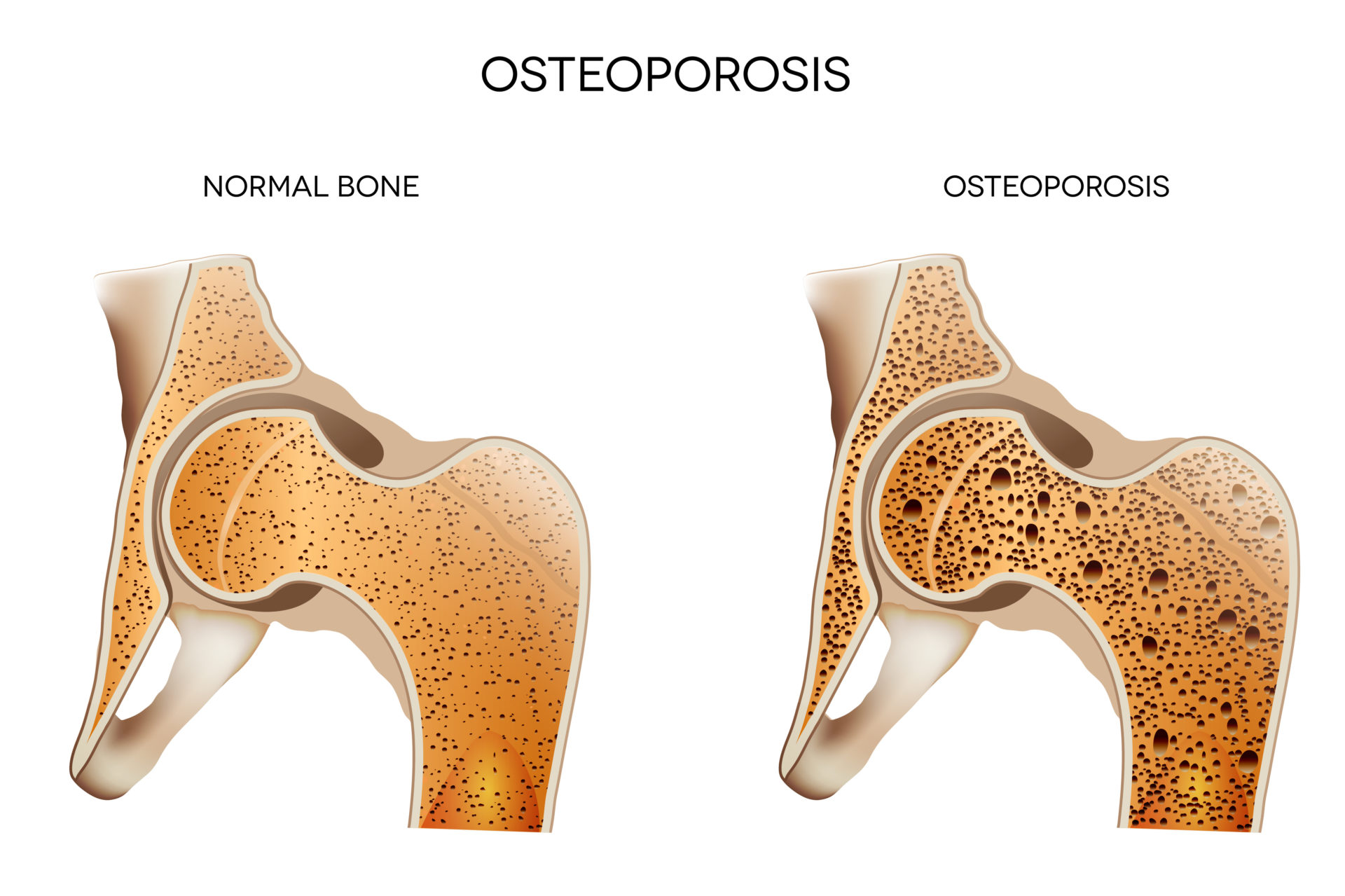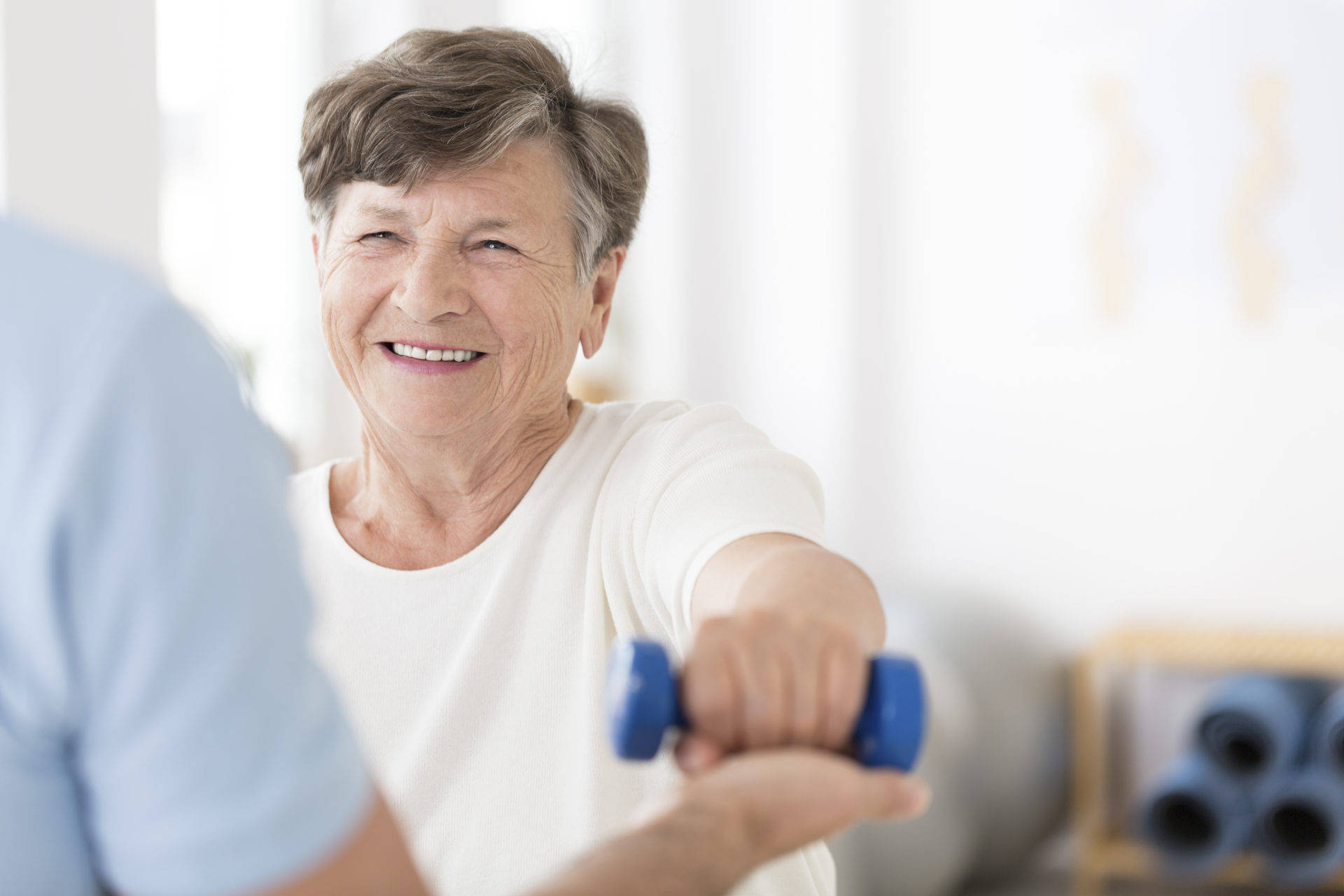An estimated 924,000 Australians have osteoporosis, representing 3.8% of the population
As with most things in life, our bones are constantly changing. They respond to daily wear and tear by changing their shape, strength and density. Bone density is a particularly important determinant of how healthy our bones are. Good bone density gives us the strength and endurance needed to complete our daily activities. In contrast, low bone density, which can occur with things like poor nutrition and minimal bone loading, increases the risk of early disability and mortality.
Low bone density can result in the condition of ‘osteoporosis’, where the skeleton becomes “thin, weak and fragile”. This is characterised by particularly large holes in the bones, which increases the risk of fracture from falls or bumps. It is most likely to affect those over the age of 45, where women have an increased incidence compared with men (AIHW, 2018).

There are several factors that increase the risk of having osteoporosis or osteopenia. These include:
- Post-menopausal women
- People with congenital bone conditions
- People with poor calcium or vitamin D levels
- People living with (or having survived) cancer
- People whose family members have had osteoporosis or osteopenia
Osteoporosis can be aggravated by other things like:
- Kyphosis, lordosis or scoliosis
- Sarcopenia or muscle wasting
- Impaired cognition
- Frailty
| Classification | BMD (standard deviations) | Fracture risk |
| Normal | 2 to -1 | Normal |
| Osteopenia | -1 to -2.5 | Slightly increased |
| Osteoporosis | -2.5 and lower | Increased |
Unfortunately, people with osteoporosis often don’t receive a diagnosis until after they have had a fracture. This suggests that many people may be living with osteoporosis without realising it. If you have any of the above risk factors, or if you are over the age of 45, visit a doctor to check your bone density.
Although living with osteoporosis can be challenging, there are many things you can do to maintain and even increase your bone density. Exercise is one such option – research shows that it has many benefits for our bones and for our general health (Mayo Clinic, 2021). Some of these include:
- Improved muscle strength
- Improved balance and flexibility
- Reduced risk of fractures
- Improved function in daily activities
- Reduced pain

If you would like more information about exercise interventions for bone health, check out the following two blogs:
Load Bearing Exercise – https://www.bodytrack.com.au/resource-hub-blog/load-bearing-exercise/
Exercises for Bone Health – https://www.bodytrack.com.au/resource-hub-blog/exercise-for-bone-health/
For more information on osteoporosis, check out the following resources:
Australian Institute of Health and Welfare. (2018). Osteoporosis. https://www.aihw.gov.au/reports/chronic-musculoskeletal-conditions/osteoporosis/contents/what-is-osteoporosis
Mayo Clinic. (2021). Exercising with osteoporosis: Stay active the safe way. https://www.mayoclinic.org/diseases-conditions/osteoporosis/in-depth/osteoporosis/art-20044989.
